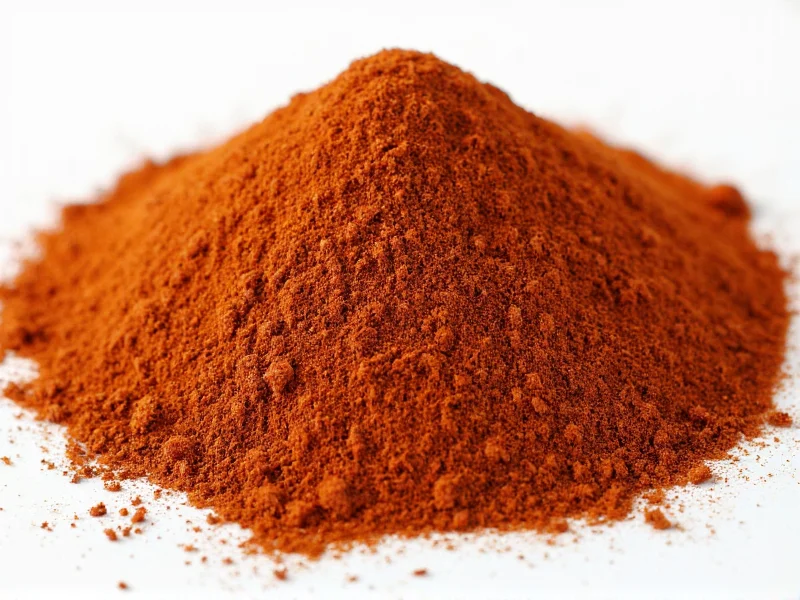Allspice flavor often causes confusion due to its misleading name, but understanding its unique characteristics unlocks culinary possibilities across diverse recipes. Unlike spice blends, genuine allspice comes from one source: the dried unripe berries of an evergreen tree native to the Caribbean and Central America. The name "allspice" emerged in 17th century England when British explorers noted its flavor reminiscent of multiple spices combined.
The Science Behind Allspice Flavor Composition
Chemical analysis reveals why allspice creates such a complex sensory experience. Eugenol (60-80%) provides the dominant clove-like warmth, while caryophyllene contributes peppery notes, and terpenes add citrusy freshness. This natural chemical synergy creates what food scientists call a flavor continuum—where multiple familiar spice notes emerge sequentially during tasting rather than blending into a single flavor.
Allspice Flavor Profile Breakdown
| Flavor Component | Percentage in Composition | Comparable Spice | Peak Sensory Detection |
|---|---|---|---|
| Eugenol | 60-80% | Cloves | Initial impact (0-5 seconds) |
| Caryophyllene | 10-15% | Black pepper | Middle phase (5-15 seconds) |
| Terpenes | 5-10% | Nutmeg | Finish (15+ seconds) |
| Other compounds | 5-10% | Cinnamon | Background throughout |
Authentic Allspice vs. Common Misconceptions
Many home cooks mistakenly believe allspice contains actual cinnamon, nutmeg, and cloves. This allspice flavor misconception persists because the single berry naturally produces volatile compounds found individually in those separate spices. True allspice maintains consistent flavor ratios regardless of harvest time, unlike homemade spice blends which vary batch to batch.
When evaluating what does allspice taste like in practical terms, consider these sensory markers:
- Initial impression: Sweet, clove-dominant aroma with subtle fruitiness
- Mouthfeel: Smooth warmth without the sharp heat of chili or black pepper
- Finish: Lingering nutmeg-like sweetness with faint juniper undertones
Culinary Applications of Allspice Flavor
The versatility of allspice in baking recipes makes it indispensable for certain desserts. In gingerbread, it enhances molasses complexity without overpowering. For pumpkin pie, it provides the "secret" warmth that distinguishes exceptional versions. When using allspice for meat rubs, its solubility in fats helps distribute flavor evenly through proteins.
Professional chefs leverage allspice flavor pairing principles strategically:
- Fruit compatibility: Complements apples, pears, and stone fruits in desserts
- Meat enhancement: Essential in jerk seasoning and sausages for depth
- Liquid infusion: Whole berries excel in poaching liquids and mulled beverages
Substituting Allspice: Flavor Matching Techniques
When seeking an allspice substitute flavor due to unavailability, proper ratio matters more than ingredient selection. The optimal replacement combines:
- ½ teaspoon ground cloves
- ¼ teaspoon ground cinnamon
- ¼ teaspoon ground nutmeg
This precise ratio mimics the natural chemical balance of authentic allspice. Avoid common mistakes like using equal parts of each spice, which creates an unbalanced, overly clove-dominant profile. For allspice vs mixed spice comparisons, note that British "mixed spice" contains additional ingredients like coriander and caraway, creating a distinctly different flavor profile.
Preserving Allspice Flavor Integrity
Ground allspice loses 50% of its volatile compounds within six months when stored improperly. To maintain allspice flavor characteristics:
- Store whole berries in airtight containers away from light
- Grind only what you'll use within two weeks
- Maintain temperatures below 70°F (21°C)
Professional kitchens often toast whole allspice berries briefly before grinding—a technique that enhances the jamaican allspice flavor characteristics by activating additional aromatic compounds through the Maillard reaction.
Global Variations in Allspice Flavor Perception
Cultural context influences how we experience allspice flavor notes. In Middle Eastern cuisine, it's used more sparingly in meat dishes, allowing its peppery notes to shine. Caribbean preparations highlight its sweet aspects in jerk marinades. Understanding these regional interpretations helps home cooks adapt how to use allspice in cooking for authentic results.
What exactly is allspice and why is it called that?
Allspice is a single spice made from dried berries of the Pimenta dioica tree. It's called "allspice" because its flavor profile naturally combines notes reminiscent of cinnamon, nutmeg, and cloves—creating the impression of multiple spices in one. Despite the name, it contains none of these actual spices.
Can I substitute pumpkin pie spice for allspice?
Pumpkin pie spice makes an imperfect substitute as it typically contains additional ingredients like ginger and cardamom. For best results when replacing allspice, use a precise blend of ½ tsp cloves, ¼ tsp cinnamon, and ¼ tsp nutmeg per teaspoon of allspice required.
Why does my allspice taste bitter?
Bitter allspice usually indicates improper storage or age. Ground allspice loses volatile compounds over time, allowing bitter tannins to dominate. Store whole berries in an airtight container away from light and heat, grinding only what you'll use within two weeks for optimal flavor.
What dishes showcase allspice flavor best?
Allspice shines in Caribbean jerk recipes, German sauerbraten, Middle Eastern kibbeh, and traditional American pumpkin pie. It enhances fruit compotes, especially with apples and pears, and adds complexity to mulled wines and spiced ciders when used as whole berries.
Does allspice contain actual cinnamon or nutmeg?
No, authentic allspice contains neither cinnamon nor nutmeg. Its complex flavor comes from natural chemical compounds within the single Pimenta dioica berry that happen to mimic those spices. This natural synergy creates the illusion of multiple spices combined, but it's entirely one ingredient.











 浙公网安备
33010002000092号
浙公网安备
33010002000092号 浙B2-20120091-4
浙B2-20120091-4